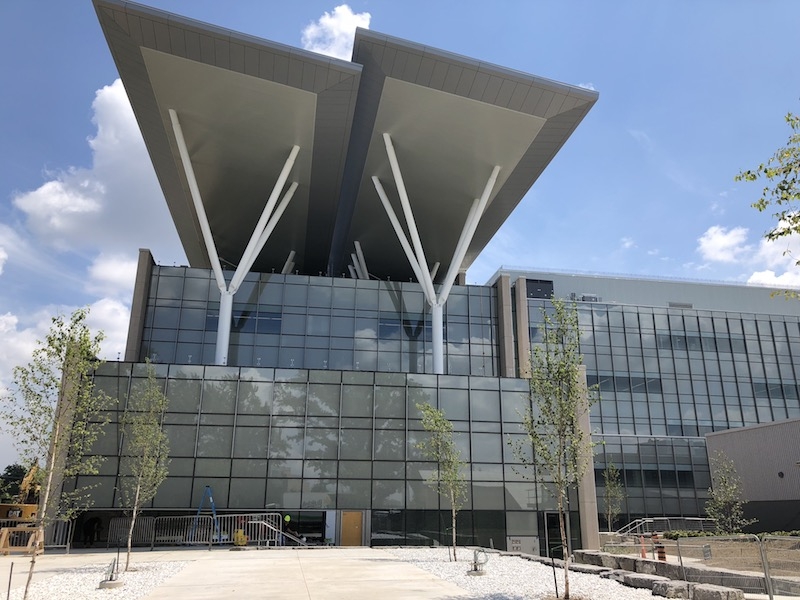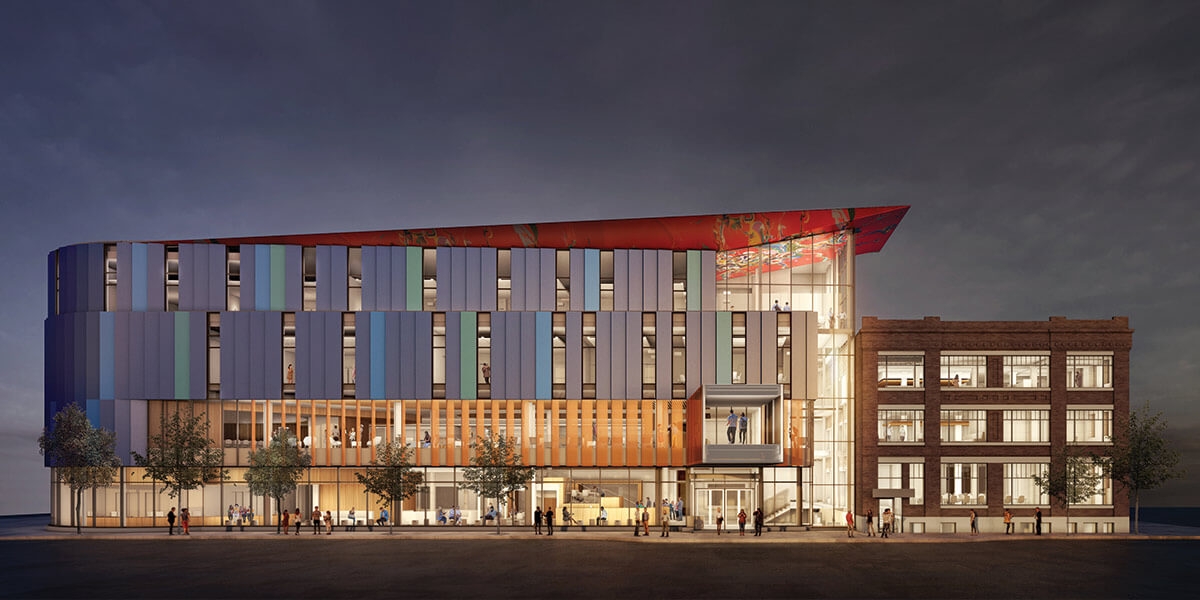Be net-zero ready by designing to TEDI targets

By Amanda Ross, Architect
As architects, we have a tremendous responsibility to the environment. Since over one-third of Canada’s total emissions in 2017 came from buildings, we need to immediately increase the energy efficiency of our designs to reduce our carbon emissions and keep global temperature increases below 1.5C over pre-industrial levels.
Canada has a tremendous need for energy, and it isn’t reducing or even plateauing — it’s still growing. Most of Canada’s current energy comes from refined petroleum products and natural gas. To meet those energy demands without fossil fuels, we would need over 3,500 km2 of solar panels.
What does that look like?

Image: A 0.5km-deep ‘solar panel border wall’ along the entire Canada/US land border.
This would obviously be a significant cost both for material, installation, and maintenance.
But there is another option: reducing TEDI.
Thermal energy demand intensity, or TEDI, is the annual heating load per sq. ft. of a building. It is being measured in more and more green building standards, including the Toronto Green Standard, the BC Energy Step Code, and the Zero Carbon Building Standard(ZCB). Passive House has been using a similar metric for many years. The reason for this is simple: by requiring low heating and cooling energy per sq. ft., standards are forcing designers to come up with more efficient thermal envelopes to dramatically reduce a building’s energy demands without adding solar panels or other renewables.
Moving from fossil fuels to energy from renewable resources, like hydro, solar, wind, or geothermal, is an important part of the climate solution. However, solar energy isn’t a magic-bullet solution on its own.

Image: The Mohawk College Joyce Centre for Partnership & Innovation in Hamilton (Photo: Ellen Cools/Energy Manager Canada)
The Joyce Centre for Partnership & Innovation at Mohawk College in Hamilton is the first institutional building to meet Canada Green Building Standard’s ZCB in both design and performance. While photovoltaic panels (PVs) factor into its zero-emission status, the design features several measures to reduce its TEDI, including triple-glazed windows, insulated pre-cast sandwich panels, and a variable refrigerant flow geoexchange pump system.
The Red River College Innovation Centre used EUI (Energy Use Intensity) as the key metric when considering energy efficiency. The focus was on creating a triple-glazed, high-performance building envelope with radiant floor heating and chilled beams.

Image: Red River College Innovation Centre
(Renders: Diamond Schmitt Architects | Project: Number TEN Architectural Group in joint venture with Diamond Schmitt Architects)
The mechanical engineers selected radiant building heating and cooling systems which were not dependant on the ventilation running. This means when a room needs more heat, more heat can be provided without providing additional ventilation and wasting fan energy. A quadcore heat-recovery ventilator ensures ‘waste heat’ is recovered from exhaust air, to preheat fresh air, before it leaves the building.
Even on a smaller scale, it isn’t always possible to meet a building’s energy needs exclusively through PVs. The RRC Innovation Centre has PVs covering the roof and the south-facing side. However, it only generates enough energy for about half of the estimated plug-load of the building. Still, due to the lighting, building envelope, and the efficient, decoupled HVAC systems, the estimated EUI demand of the building is 112.
For buildings targeting net-zero, a low TEDI is critical unless the site and budget are large enough to provide an expansive renewable energy installation. However, even non-net zero buildings and building renovations can benefit from choosing a TEDI target and focusing on ways to achieve it.
Lower operating costs are one benefit in an age of rising energy costs and carbon taxes. Another benefit is the possibility of converting a building to net-zero in the future by adding photovoltaics, or other renewable technology, as they become cheaper and more efficient.
To reach our climate goals, we need to use all our design and building envelope strategies to reduce our energy demands, increase our energy efficiency, and provide more renewable energy. Solar panels and wind turbines are important, but they are not the only strategy we have — TEDI has a key role to play.